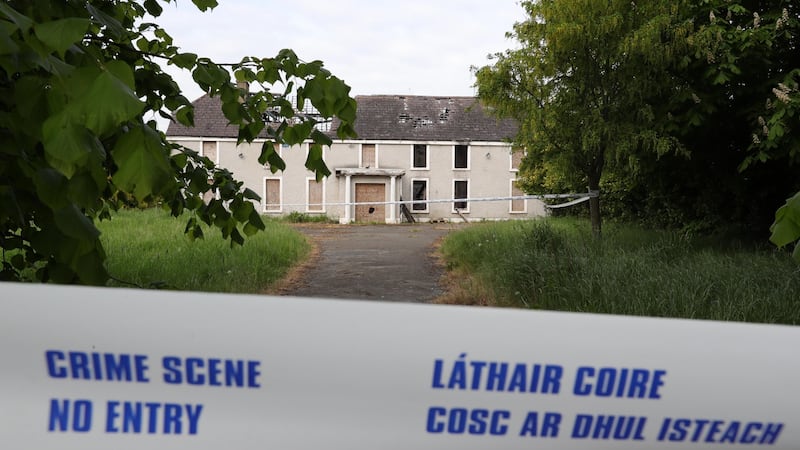Like many others, I have spent the week reading about and listening to analysis in the wake of Ana Kriégel’s murder. I presumed and indeed expected that someone else would state the blindingly obvious, but as yet they haven’t. So here I am. I will say it. Ana Kriégel was murdered by boys because she was a girl.
It’s a simple explanation and it is a wonder it hasn’t been said already. It isn’t a very nice sentence to read. Yet it is a harsh and unpalatable fact. Despite all of the writing seeking more complex explanations, the real reason is hidden in plain sight. Ignored because we cannot or will not look at the fact that gender-based violence is a real problem in Ireland.
I have read a few different analyses of this terrible story. Some have described Ana’s murder as singular. Let me address this one first. I am sure it is just that for her parents and her family. But both worldwide and nationally, women and girls are all too often, some would even say routinely, the victims of violence at the hands of men and boys. Paradoxically, writers who call Ana Kriégel’s death singular often also ask us not to talk about those found guilty of her murder. Yet her death is only singular because the male perpetrators were young. Many women, young and old, and including girls, have been murdered previously in Ireland.
Irish statistics suggest as many as one in two women report having experienced violence at the hands of men
These deaths are the thin end of the wedge. In fact the violence men and boys visit upon women and girls is so commonplace that the World Health Organisation believes that the majority of it never comes to the attention of the authorities. This week we read that in the UK the number of rape cases women reported in England and Wales is up, though the number of charges brought against perpetrators is down. That’s worrying.
Violent porn
Irish statistics suggest as many as one in two women report having experienced violence at the hands of men. One in five women report that a man has been sexually violent towards them. Current estimates are that fewer than 10 per cent of even the most serious cases make it to court. And conviction rates remain low. Is it any wonder that so many women are not at all convinced that their complaints against men will be taken seriously?
A second discussion point this week has been in relation to violent porn. When trying to make sense of this awful case and explain the criminal behaviour of boys or men, porn was another consideration. Importantly, violent porn is very rarely used as an explanation of women’s violent behaviour. In fact it is almost exclusively implicated in the behaviour of violent men. Though its effects on “people” are often discussed in debates about the impact of porn, it is men and boys who are most interested in and model their behaviour on violent pornographic images. Women rarely do so. This tells us that porn plays to existing gender-based expectations around sex and sexual violence.

Others have considered whether the perpetrators are psychopaths. Men who kill women, or in this case boys who kill a girl, are often presented as psychopathic, aberrant, singular. Some might say these are unusual men or boys. Aside from the fact that we have no evidence for this explanation in this case, this position is insidious. If we accept the position that these cases result from a few very sick men, the need to address the more widespread problem is immediately irrelevant.
Particularly dark
Ana Kriégel’s death is a particularly dark representation of men’s violence towards women. Make no mistake: violence by men against women is a continuum, and this is its most extreme form. Murder is only a fraction of the burden arising from this form of violence. Violence against women and girls contributes to lifelong ill-health and early death. Many victims of violence misuse alcohol and drugs and practise unsafe sex in an effort to cope with the psychological cost of their experiences. Violence places a strain on the health and education system, the criminal justice and social welfare system, as well as economic and family life.
We need boys and men to be held to task. We need to stop talking about violent men as though they were unusual and peculiar
It is time we stopped looking the other way. We have an endemic problem in this country with gender-based violence. It is so entrenched that boys as young as 13 visited dreadful violence on a vulnerable girl. This violence exists in our schools and universities, on our streets and in our homes. We need to legislate to support victims and penalise perpetrators. But we also need a cultural shift where girls and women’s complaints are responded to and taken seriously. This would mean no dismissal of complaints on the basis of some attribute of the women. “Troubled” or “slutty” are labels that can arise from the trauma of gender-based violence. Equally we need boys and men to be held to task. We need to stop talking about violent men as though they were unusual and peculiar. A really good start would be a guiding principle that values women’s safety over men’s feelings.
Orla Muldoon is professor of psychology at University of Limerick











